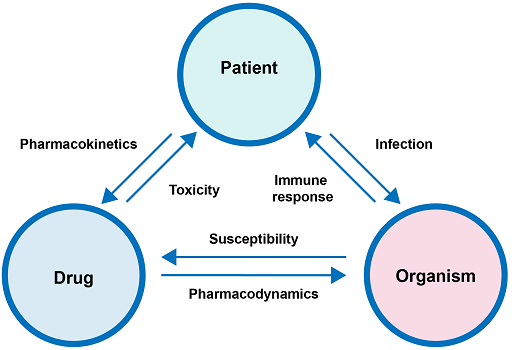Dosing and dose adjustment
In order to understand the appropriate dose of a drug needed for clinical efficacy in a patient, it is necessary to understand pharmacokinetics and pharmacodynamics parameters (Figure 4).
The pharmacology of antimicrobial therapy can be divided into two distinct components:
- Pharmacokinetics: What the body does to the drug. Pharmacokinetic parameters include absorption, distribution, metabolism and elimination.
- Pharmacodynamics: The relationship between the serum concentration and the pharmacological (mechanism of action) and toxicological effects of drugs.
It is not necessary to understand the details of pharmacokinetics, pharmacodynamics and the resulting dosing schedules to implement AMS. However, the following sections on these aspects have been included in this course for your information, because they explain why different drugs must be administered according to particular schedules for efficacy, and to avoid toxicity to the patient.
Guidance on correct dosing must be readily available to all clinicians at your facility (such as a family doctor, pharmacist, local clinic or hospital). This guidance must be followed systematically, also taking into consideration individual characteristics of the patient such as allergies or renal problems.
Note that you will not be tested on the following sections in the end-of-course quiz.
5.2 Patient-level interventions





